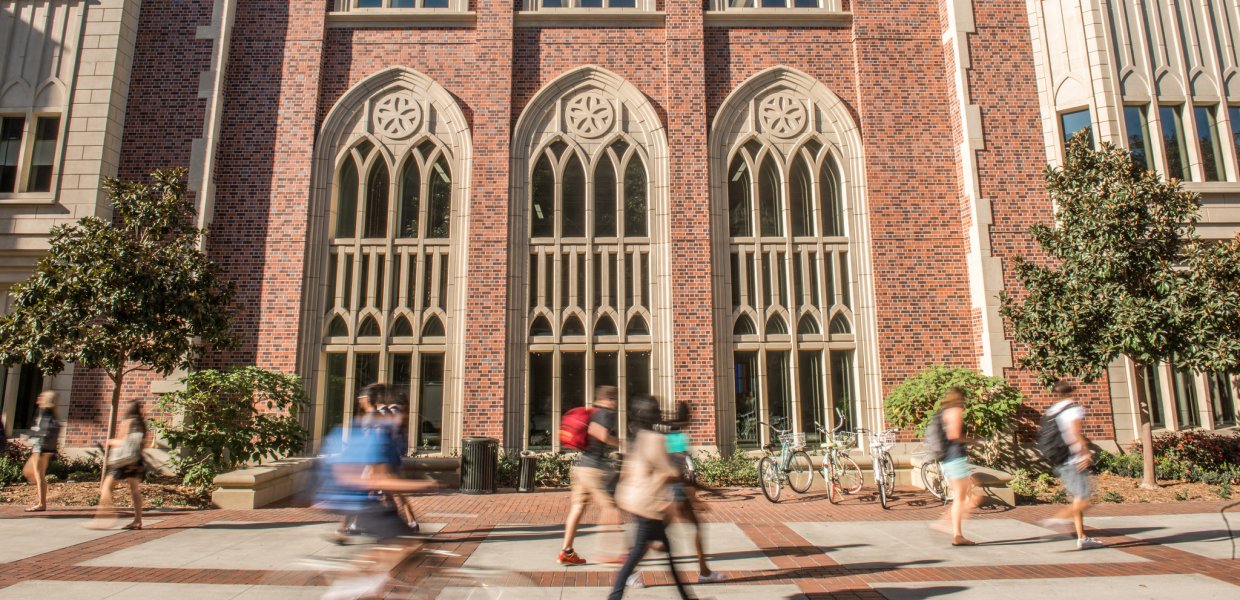Brianna Sacks (Annenberg M.A., 2014) is the third recipient of the Carlson-Gerdts fellowship, made possible by alumna Ria Carlson. Fellowship winners spend 10 weeks as reporters on the Los Angeles Times business desk. While at Annenberg, Sacks was also the editor-in-chief of Neon Tommy, the school’s digital news site. She spoke with Katharine Weimer about her time at Annenberg, her approach to journalism and her thoughts on entering the media field in the digital age.
You’re currently the Editor-in-Chief of Neon Tommy. What drew you to Neon Tommyand how did you get involved?
I started as a staff reporter my first semester here, which was really my introduction to journalism. I’d done creative writing in college, but hadn’t expected to get into journalism at that point. A few faculty members had suggested that I should check it out, so I started off on general assignment for a few months and started to move up from there. They asked me to take over at the end of that year!
Business journalism probably wasn’t something you came here expecting to do. How did you first get exposed to it?

Did that experience change your perspective at all as a reporter?
I don't think it changed my perspective as a reporter, I think it actually opened my eyes to all that is going on under the surface of the stories I like to tell. I still like to have characters and people drive my stories, but now they incorporate business elements, whereas I used to never even think about asking those types of questions before or telling the story in that way.
You do creative writing in addition to your journalism. How does this complement the rest of your work?
Creative writing was what I’d always planned on doing with my life. Before coming to USC, I’d been looking around at MFA programs but wasn’t sure what kind of writing I wanted to do. What I really want now is to find a way to fuse creative storytelling and journalism. At first I was worried that journalism didn’t have enough room for a distinct writing style, but I’m realizing that that isn’t the case. Multimedia has been a tool that has helped me have more fun with it, and as I’m growing as a journalist I’m feeling more comfortable in my voice as a writer.
How has digital and emerging media empowered and limited your work?
This has been my first jump into anything digital, from dabbling in coding to using the Adobe suite, so at first I felt like I was playing catch up but now these are tools that can add new dimensions to my stories. At Neon Tommy, we now have a photography department, a social media department, a graphic design department—having a compelling digital package is everything. However, I have felt that as a student I’ve been somewhat limited in what I can do in the classroom digitally. I feel a push to be digitally literate, but sometimes it feels like we’re expected to come in already having these skills.
How do you feel your time at Annenberg, both in school and with Neon Tommy, has prepared you for your career?
I think that now I know how to do a little bit of everything. Being involved heavily in Neon Tommy and reporting for ARN has helped me learn how to look for new perspectives for a story. At Annenberg I’ve been trained to keep my eyes open to seeing a story in many different ways, which has been hugely beneficial. The emphasis on new, rich media also makes the stories feel more current and professional.
Any advice for journalism students?
I didn’t know this was what I wanted to do. But I think my journey illustrates that you can do anything if you work really hard for it. Journalism is about telling a story that connects with people, and for that reason my advice is to never say “no” to an opportunity to do something you usually might not. Be open-minded and committed to the work you decide to do. Journalism is not as rigid as it was once thought to be—have fun with it!
